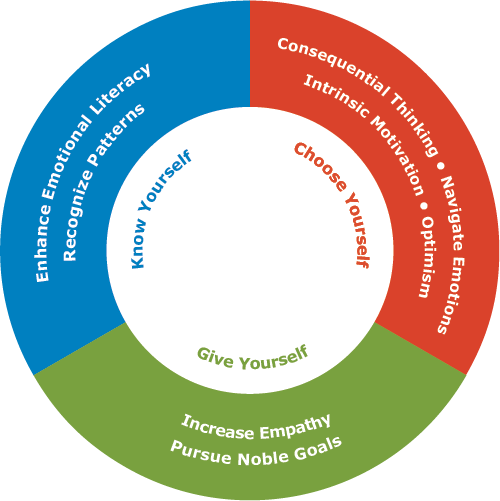
Hi there!
My “mother-in-love” is newly into all things mindfulness, but her efforts don’t always go as blissfully as planned. This week, she texted me:
My breathing exercises need some work. I try to do gentle peaceful breathing ? and it comes out more like ?
I giggled, and I know she’s not alone because I’ve been there, too. Who hasn’t had the experience of being in a yoga or meditation class feeling like they weren’t doing that relaxing part “right”? What reasons do we have for bothering with this trendy “deep breathing” stuff anyway? So I looked into the research, and it turns out we have a lot of statistically-backed reasons.
Three Breaths for Lowering Your Cortisol Level



Stress keeps us alive. Every single one of us responds to stressful situations with a “fight or flight” response.
Imagine taking a leisurely walk in the park when you suddenly see a snake on the path two feet in front of you. In one quick second, your body mobilizes. Your eyes register the sight of the long, winding, menacing creature to the amygdala in your brain. The amygdala processes the snake and screams to the hypothalamus: “THREAT!!!!” The hypothalamus quickly and competently shoots the message of alarm to your nervous system, which prepares you either for a battle or to run like hell. Epinephrine (adrenaline) floods your bloodstream, triggering your pounding, quick heart rate. Extra blood fills your veins. Your blood pressure sharply increases, rapidly funneling blood toward your vital organs and muscles. Your breath quickens and shallows, pressing extra oxygen into the brain for added alertness. You are now fully prepared to fight this snake or run the opposite direction.
Just reading this– do you feel these physiological triggers in your body?
This stress response is well designed to save you from danger, and it has been doing so for you and your ancestors for a long, long time. But here’s the tricky truth of modern day existence: your body has the same response to a stressful traffic jam as it does to this snake. In our stress- filled environments, it’s no wonder the modern day human has such issues with stress-related ailments.
We can’t control most of these physiological changes. If our body senses a threat, whether a tiger or an annoying customer, the chain of stress-related reactions will go into motion. But we do have control over one reaction in this chain. Do we have control over our amygdala, the release of epinephrine, or our increased blood pressure? No. But we have control over our breath.
We can communicate safety to our body and thus diminish the effects of the stress response with the power of our breath.
Ready to learn how?

After looking over multiple research studies, I’ve identified three types of breath that are statistically proven to soften the effects of stress on your body. All three of them are very easy to do. As you practice them, remember that finding ease and relaxation in your body is the goal. If you feel your stress response kick in, back off a bit or try a different breath. Try these three different breaths to find the one that feels the most gratifying to you:
The Belly Breath
According to this research: “Diaphragmatic breathing [belly breathing] involves contraction of the diaphragm, expansion of the belly, and deepening of inhalation and exhalation.” Participants attended 20 Belly Breath sessions over 8 weeks which resulted in significantly lower cortisol (stress) levels and significantly higher sustained attention rates than the control group.
How to: Find your spine straight and long, whether sitting, standing, or lying down. Begin breathing into the chest, then continue filling your lungs with air as if you were filling your belly up with air like a balloon. Relax the abdominal muscles and allow your belly to push out. This is how I teach it to kids, but it works great with adults, too: Lying down, put something light like a notebook or small pillow on your belly + watch it go up and down. Do this for as few as 5 breaths, or up to 5 minutes.
The 2:1 Breath
According to this research: “In 2:1 breathing, exhalation time is twice of inhalation.” Patients with hypertension practiced this 2:1 breath 10-14 minutes per day for 3 months, which resulted in a statistically significant reduction of blood pressure, heart rate, and other stress response indicators.
How to: Find a position with your spine straight and long, whether sitting, standing, or lying down. Breathe out to a mental count of 6, the breathe in to a mental count of 3. You can use any ratio of 2:1 that feels relaxing to you. Do this as little as 5 rounds of breath, or if you want to reap the effects of the research study, up to 7 minutes twice per day.
The Sighing Breath
It turns out the sigh you emit that often comes after frustration or sadness is crucial to human existence. It helps to regulate breathing by triggering a huge-volume breath followed by a pause and was found to significantly decrease the stress response in anxiety-prone individuals.
How to: Find a position with your spine straight and long, whether sitting, standing, or lying down. Take a slow and deep breath in, then let it all go with a big sigh. You can experiment with different exhalation sounds, quiet and loud, to find the breath that gives you the most relief. Do this sighing breath three to seven times.
PS- In response to my mother-in-love’s text, I wondered if her body was telling her something by letting out big breaths instead of “calm” ones. I suggested she try the Sighing Breath to see if it felt better. She loves it and feels much more comfortable! Pay attention to how your body responds to each breath, and be open to the idea that your breath may be telling you what your body needs!

Which type of breath do you think helps you diminish your stress response?
How could you integrate this type of breathing into your every day life? Could you do three breaths when you get in the car, or before bed, or…?
Now that you know more about your body’s stress response, which physiological trigger could you become aware of? What could you do in response to this trigger to communicate safety to your body?

Illuminate is a weekly e-mail series that provides practical tips + galvanizing inspirations for practicing an emotionally intelligent life. In our time together, we’ll operate from the assumption that you have all the wisdom you need inside of yourself + that you have a purpose the world needs to see. We will explore the tools + techniques to illuminate your own inner wisdom and purpose. If you’d like to receive this free gift of goodness in your inbox every week, subscribe here.
What’s new in emotional intelligence?
Overcoming Urgency: How Emotional Intelligence Helps You Slow Down and Focus on What Truly Matters
If you ever feel stuck in urgency mode, emotional intelligence offers a way out — and a way back to what matters most.
Integrated Emotions: Feelings Are Allies
What if all our feelings had value? Many people see emotions as “good” or “bad” — which leaves us in a constant state of internal struggle against our own feelings. Here’s a framework to rethink feelings as valuable signals about what’s important.
The Six Seconds Model of Emotional Intelligence: What It Is and How to Use It (+ PDF)
What is emotional intelligence and how do you practice it? Explore the Six Seconds Model of Emotional Intelligence to improve your life and relationships.
Plutchik’s Wheel of Emotions: Feelings Wheel
Grow your emotional literacy with Plutchik’s Wheel of Emotions. Then download the free Practicing Emotional Intelligence eBook to go deeper!
From Enemy to Ally: How Eric Pennington Changed His Relationship with His Own Emotions – and Found His Life’s Purpose
How emotional intelligence helped Eric Pennington transform corporate life setbacks into strengths – and find purpose in both work and life.
Helping Others Achieve Overall Well-being and Healthy Connections: How Emotional Intelligence Guided Pamela Barker’s Career Path Growth
Pamela Barker’s journey began with healing bodies, but it was her discovery of emotional intelligence that unlocked her true purpose: helping others achieve overall well-being and healthy connections. From her days as a physical therapist to becoming a passionate EQ coach, Pamela’s story is one of transformation, resilience, and the power of connection. Her experience shows that real change starts from within.
- Identify Your Most Fulfilling Career: A Step-by-Step Guide for Women - March 21, 2022
- POP-UP Festival Partnership with AEON Corporation - March 9, 2022
- 3 Interview Tips for Women from an Executive Emotional Intelligence Coach - February 9, 2022






1.What is the difference between stress ,anxiety and depression?
2.Is the stress include both the anxiety and depression .
Sad we have to be reminded to breathe.
Nothing sad about it. We aren’t born knowing how to use breathwork to calm down, or the type of breathing we need for alertness & energy. Like an6 other useful skill, using breathwork to help ourselves is a learned skill that takes practice.
Hi Maria,
Enjoyed your article. One correction, though. Diaphragmatic breathing (belly breath) is done by first imaging you are filling your belly, and then letting it expand upward into the chest. You have directed students to do the opposite. As the diaphragm drops (with an inhalation), the lower areas of the lungs fill first and then move into the chest. I’ve always liked using the image of the tide going out and then in. It’s an image most of my clients find calming.
Agree with you – fill the belly first – the uptake into the chest will automatically follow (don’t really even need to consciously do that continued breath into the chest. The body will do it automatically.
Thanks Maria for a refreshing article, a reminder to realign with life that we tend to forget. Simple, yet highly beneficial breathing techniques: a good addition to my EQ repertoire.
Good
You’ve got the ‘Sigh’ breath wrong. It’s a breath, with another quick, short breath on top of it, then a long slow exhalation. The added 2nd breath on top of the first one, fills up those tiny lung sacs further with oxygen, that with just one breath would not be getting that extra inflation. This is the most calming type of breathing one can do for calming the physiology and activating the parasympathetic nervous system (AKA – the ‘rest and digest’ nervous system.